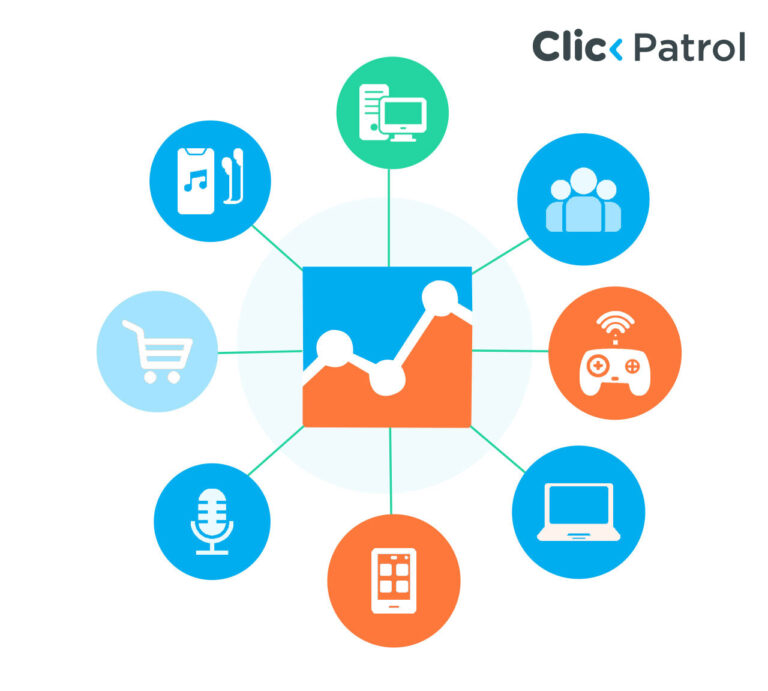
Data Discrepancies Between Google Ads and GA4
Abisola Tanzako | Jun 27, 2024

Table of Contents
- Understanding Google Ads
- How Google Ads works
- Impact of Google Ads on your ad campaigns
- Understanding GA4
- How GA4 works
- Impact of GA4 on your ad campaigns
- Data discrepancies between Google Ads and GA4
- Impact of data discrepancies between Google Ads and GA4 on your ad campaigns
- Strategies to manage data discrepancies between Google Ads and GA4
- Minimizing Data Discrepancies between Google Ads and GA4
- FAQs
Here’s how to solve data discrepancies between Google ads and GA4
Data is an intricate part of success in digital marketing. It fuels strategic decisions, gauges campaign effectiveness, and paves the way for future optimizations. Essential tools like Google Ads and Google Analytics 4 (GA4) are central to this data-driven approach. However, marketers often need clarification between the data reported by these two platforms. As digital marketers and analysts rely on accurate data to make informed decisions, discrepancies between Google Ads and Google Analytics 4 (GA4) can be a significant cause for concern.
These discrepancies can lead to confusion, misinterpretation of data, and potentially costly mistakes in ad campaigns. In this article, we will explore these discrepancies and their impacts on your ad campaigns and the reasons behind them, as well as provide strategies to manage the data discrepancies between the two platforms.
Understanding Google Ads
Google Ads is a formidable platform for online advertising, allowing advertisers to invest in the placement of concise ads, offerings, product displays, and multimedia content within Google’s advertising landscape. This platform links companies to engage with countless prospective customers who utilize Google’s search engine and related platforms. Google Ads serves as the gateway to Google’s expansive online advertising landscape. This platform empowers you to craft digital advertisements that capture the attention of potential customers at the precise moment they show interest in your offerings.
It’s an effective tool for amplifying your business presence, boosting product or service sales, elevating brand awareness, and driving a surge in website traffic. The platform is entirely accessible online, offering the flexibility to modify your advertising campaign whenever necessary, including adjustments to ad copy, settings, and spending. With Google Ads, you are not bound by a minimum expenditure requirement; you can dictate your budget parameters. You can select the specific demographics for your ad’s display, allocate a budget within your comfort zone, and effortlessly track the influence of your advertisement.
How Google Ads works
Google Ads works on an auction system every time a user performs a keyword search. Advertisers choose keywords related to their business offerings, create an advertisement that will appear in the search results, and bid on a keyword. Google AdSense enables publishers to earn revenue from their online content by showing ads relevant to their site’s topics and audience. These ads are developed and funded by advertisers looking to market their products. Publishers earn varying amounts based on the advertisers’ bids for ads displayed on their sites.
Impact of Google Ads on your ad campaigns
As a powerful advertising platform, Google Ads profoundly impacts the execution and success of ad campaigns. Here are some of its multifaceted impacts:
- Targeted reach: Google Ads enables advertisers to target specific audiences based on demographics, interests, and search behaviors, ensuring their campaigns reach those most likely to convert.
- Cost management: Google Ads’ pay-per-click model gives advertisers precise control over their budgets. They only pay when users engage with their ads, making it a cost-effective advertising solution.
- Measurable performance: The platform provides detailed analytics measuring campaign performance, allowing for swift adjustments and optimization.
- Brand visibility: Even if users don’t click on an ad, the increased visibility can enhance brand recognition and recall.
- Competitive advantage: Google Ads can position your brand in search results, providing a competitive advantage over rivals that might not utilizeneed to utilize paid advertising.
- Flexibility: Campaigns can be tailored with various ad formats and features to meet specific marketing goals and adapt to changing market conditions.
- Speed to market: Unlike organic search strategies that take time to build momentum, Google Ads can generate immediate traffic and results.
- Local to global reach: Whether targeting a local community or an international audience, Google Ads scales to fit the campaign’s geographic needs.
- Integration with other platforms: Google Ads works seamlessly with other Google services and third-party tools, enhancing the overall marketing strategy.
Each of these impacts plays a crucial role in shaping the effectiveness of your ad campaigns, from planning through execution to analysis.
Understanding GA4
Google Analytics 4 (GA4) emerges as the newest upgrade in Google’s suite of web analytics services, offering vital statistics and analytical tools crucial for search engine optimization (SEO) and marketing analysis. GA4 introduces an innovative, event-based data collection approach that captures detailed interactions from websites and mobile apps. It is a modern analytics property designed to meet the demands of future measurement challenges.
With GA4, you can comprehensively track and analyze traffic and user engagement across your digital properties. The primary aim of GA4 is to equip you with insights into how users discover and interact with your online presence. It provides a wealth of metrics that help you assess whether your marketing strategies are achieving their intended objectives.
How GA4 works
Google Analytics 4 (GA4) monitors and analyzes web traffic, providing valuable insights into user interactions on your site. These reports are based on an event-driven data model that records user activities, including page visits, clicks, transactions, and tailored events. Utilizing sophisticated machine learning algorithms, GA4 processes this data to offer detailed insights into user engagement, conversion trajectories, and audience demographics.
A standout feature of GA4 is its ability to perform cross-device tracking. This allows for identifying and monitoring users across different devices, giving businesses a comprehensive understanding of their customer’s journeys.
Impact of GA4 on your ad campaigns
Google Analytics 4 (GA4) significantly impacts advertising campaigns by offering a more integrated and user-centric view of data. Here are some ways GA4 influences ad campaigns:
- User-centric measurement: Unlike previous versions, GA4 focuses on users rather than sessions. This shift allows advertisers to understand the customer journey holistically, tracking interactions across websites and apps over multiple sessions.
- Event-based tracking: GA4 tracks’ events’ instead of ‘hits,’ providing more flexibility in capturing the nuances of user behavior. Advertisers can customize events to measure specific actions that align with campaign goals, leading to more targeted insights.
- Enhanced machine learning: GA4’s advanced machine learning capabilities can predict future actions users may take, such as the likelihood of a purchase. This predictive power helps advertisers optimize campaigns for higher conversion rates.
- Cross-device and platform tracking: With cross-device tracking, GA4 provides and a unified view of how users interact with different touchpoints, allowing advertisers to create more cohesive and effective multi-platform campaigns.
- Improved audience segmentation: GA4 offers more granular audience segmentation tools, enabling advertisers to create highly targeted ads.
- Integration with Google Ads: GA4 seamlessly integrates with Google Ads, allowing for the easy importation of GA4 events as conversion actions in Google Ads. This integration helps refine ad targeting and bidding strategies based on rich analytics data.
- Data-driven attribution: GA4 introduces a new data-driven attribution model that assigns credit to various touchpoints along the conversion path. This model helps advertisers understand the most effective channels and messages, resulting in a more intelligent ad spend allocation.
- Privacy-centric approach: In response to increasing privacy concerns, it provides robust data collection without cookies or identifiers, ensuring advertisers can reach their audience while respecting user privacy.
GA4’s impact on ad campaigns is transformative. It offers advertisers the tools to create more personalized, efficient, and effective advertising strategies that resonate with their target audience.
Data discrepancies between Google Ads and GA4
Data discrepancies between Google Ads and Google Analytics 4 (GA4) can arise due to several factors:
- Attribution models: Google Ads uses a last-click attribution model by default, crediting the last touchpoint before conversion. GA4 offers various attribution models, including data-driven attribution, which distributes credit across multiple touchpoints. This fundamental difference can lead to varying conversion counts.
- Conversion tracking: Discrepancies may occur if conversions are defined differently in Google Ads and GA4 or need to be correctly linked. Ensuring both platforms track the same conversion events is crucial for consistent data.
- Clicks vs. sessions: Google Ads focuses on clicks, while GA4 tracks sessions. If a user leaves and returns within a short period, a single click in Google Ads can result in multiple sessions in GA4, leading to different reporting figures.
- User identification: GA4’s user-centric approach may track users across devices, while Google Ads might not, especially if users are not signed in to their Google accounts on all devices.
- Filters and data processing: GA4 may apply filters or processing rules that exclude specific data, whereas Google Ads might include all clicks, leading to discrepancies in reported metrics.
- Timing differences: Due to processing times, data reporting can lag between the platforms, especially with GA4’s more complex event-based model.
Impact of data discrepancies between Google Ads and GA4 on your ad campaigns
Data discrepancies between Google Ads and Google Analytics 4 (GA4) can have significant impacts on your ad campaigns, including:
- Inaccurate performance evaluation: Inconsistent data can lead to a skewed understanding of your ads’ performance, making it difficult to assess their effectiveness and return on investment.
- Inaccurate budget allocation: Discrepancies in data can result in misallocating your advertising budget, potentially overspending on underperforming campaigns or underfunding successful ones.
- Missed optimization opportunities: Conflicting data may obscure opportunities for optimization, such as identifying high-performing audience segments, keywords, or ad creatives that could drive better results.
- Erosion of data confidence: Significant discrepancies can undermine your confidence in the data itself, making it challenging to make informed decisions and trust the insights these powerful platforms provide.
- Inefficient campaign management: Data discrepancies can lead to inefficient campaign management, as you may need to spend more time reconciling data instead of focusing on strategic planning and execution.
- Flawed attribution models: Differing attribution models between Google Ads and GA4 can distort your understanding of the customer journey, potentially leading to misguided marketing efforts and missed opportunities.
Strategies to manage data discrepancies between Google Ads and GA4
- Align attribution models: Consider adjusting the attribution model in Google Ads to match the data-driven model used by GA4 more closely. This can help minimize discrepancies caused by different attribution approaches.
- Implement consistent tracking: Ensure that tracking codes and configurations are correctly implemented and consistent across both platforms. Use the same conversion definitions and tracking parameters to maintain data integrity.
- Utilize UTM parameters: Implement UTM parameters in your Google Ads campaigns to provide more granular tracking data. This allows for better attribution and helps reconcile data between the two platforms.
- Regular audit and data comparison: Schedule regular audits to compare data between Google Ads and GA4. Identify any significant discrepancies and investigate the underlying causes to resolve inconsistencies.
- Leverage Google Ads API and GA4 API: Utilize the respective APIs to extract data from both platforms and perform custom analysis. This allows for a more comprehensive understanding of the data and helps identify discrepancies.
- Focus on trends and patterns: Rather than exact numbers, focus on identifying trends and patterns in the data. Look for consistent improvements or declines in key metrics across both platforms.
Minimizing Data Discrepancies between Google Ads and GA4
While both Google Ads and GA4 are potent tools in digital marketing, it’s essential to understand their limitations and the potential for data discrepancies. By utilizing the above mentioned strategies, marketers can minimize differences and gain a more accurate picture of their advertising performance. Remember to focus on trends and patterns rather than exact numbers and leverage the respective APIs for deeper analysis.
FAQs
Q:1 How can I ensure data continuity when transitioning from Universal Analytics to GA4?
Google provides migration tools and resources to help with the transition to GA4. Planning, ensuring proper tracking implementations, and leveraging historical data views are essential to maintain data continuity.
Q:2 Can data discrepancies between Google Ads and GA4 be eliminated?
While eliminating all data discrepancies may be challenging, implementing best practices and regularly auditing data can significantly minimize inconsistencies and ensure a more reliable and accurate view of ad campaign performance.
Q:3 Which platform is better, Google Ads or GA4?
Both Google Ads and GA4 are essential platforms with distinct strengths. Google Ads excels at managing and tracking paid advertising campaigns, while GA4 offers comprehensive insights into user behavior across various channels, including organic traffic. They complement each other in providing a holistic view of marketing performance.





